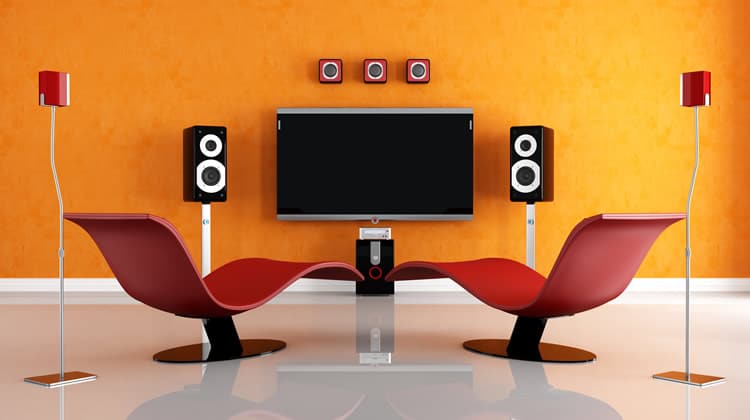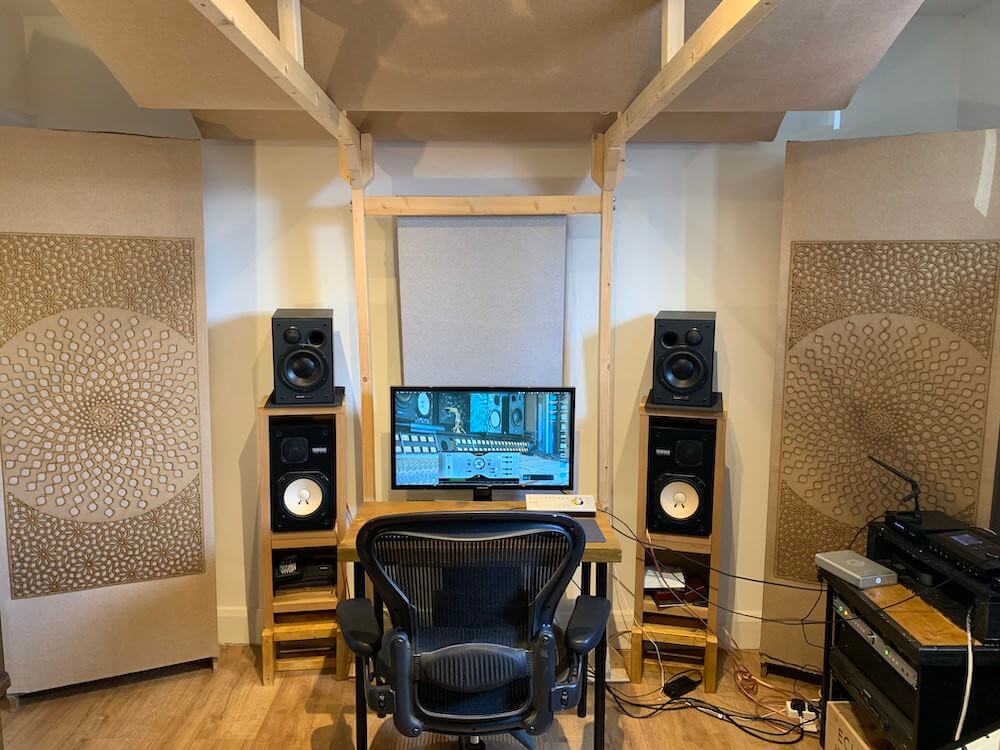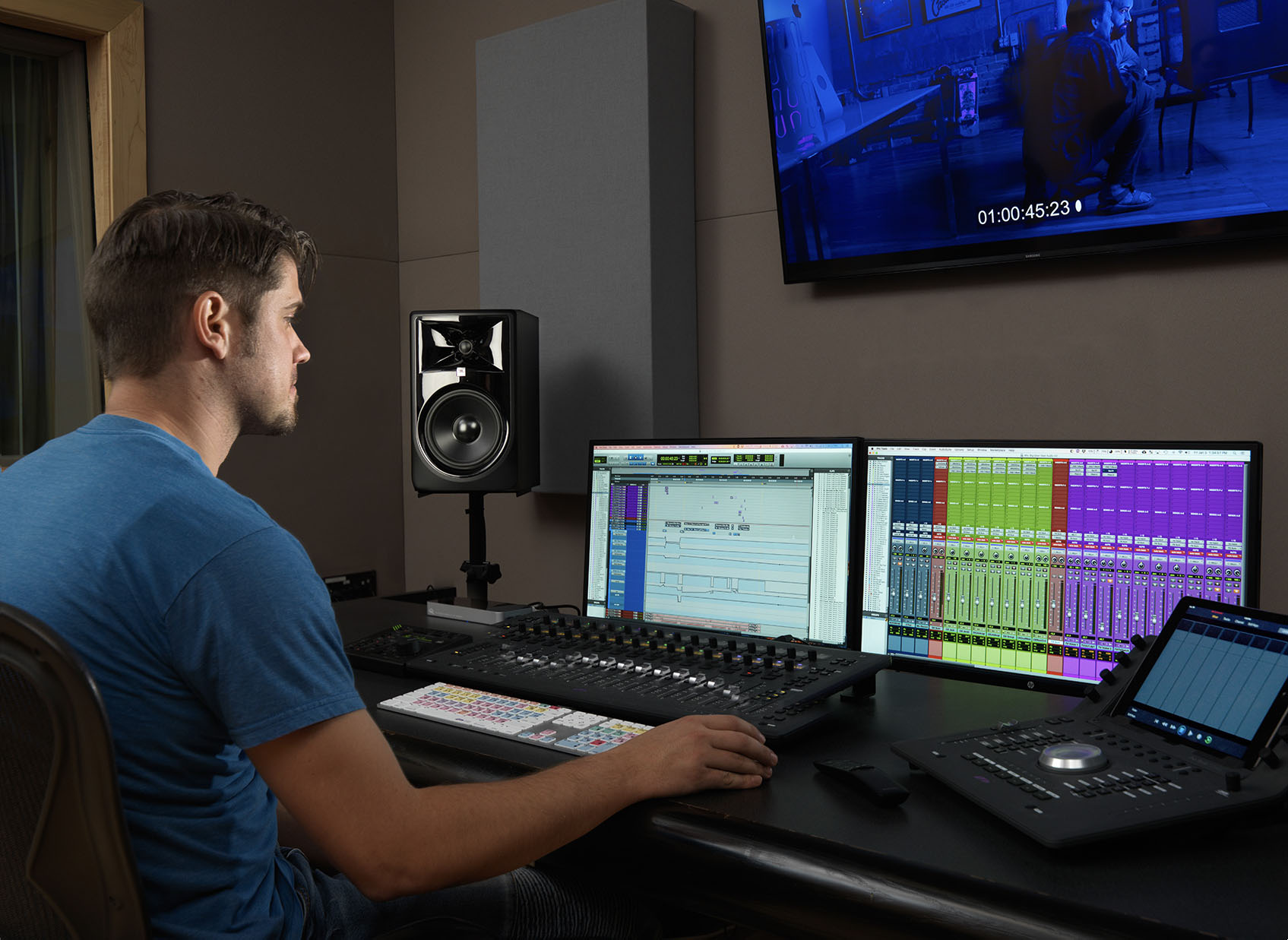Studio monitors for small rooms should prioritize accuracy over loudness to avoid sound distortion. Consider compact, nearfield monitors for optimal sound reproduction in limited spaces.
When choosing studio monitors, the size of your room plays a crucial role in the decision-making process. Small rooms can benefit from monitors that offer balanced sound in a limited space without overwhelming the listener. Quality studio monitors can make a significant difference in the overall sound quality of your recordings and mixes, especially in smaller studio environments.
By selecting the right monitors for your small space, you can ensure that your audio projects sound clear, precise, and professional.

Credit: usabilitygeek.com
Importance Of Studio Monitors In Small Rooms
Studio monitors play a crucial role in small rooms to ensure accurate sound reproduction. This is essential for any audio professional or music enthusiast striving for optimal audio quality.
Enhancing Sound Quality
Studio monitors are designed to provide precise and neutral sound reproduction. They minimize distortion and help you hear subtle details in the audio, ensuring your mixes sound great in small spaces.
Overcoming Acoustic Challenges
- Small rooms often suffer from acoustic issues such as reverberation and standing waves.
- Studio monitors can help mitigate these challenges by providing accurate monitoring, allowing you to make informed decisions during the mixing process.
Choosing The Right Studio Monitors
Understanding Room Size And Shape
Consider how room size and shape impact sound quality.
Matching Power And Size To Room
Match power and size of monitors to your specific room for optimal performance.
Placement And Calibration Tips
Studio monitors are vital for achieving accurate sound reproduction in small rooms, but even the best monitors won’t reach their full potential without proper placement and calibration. Optimizing the position of the monitors and utilizing room treatment for acoustic control are crucial to ensure a balanced sound and minimize unwanted reflections. Here’s a guide to help you get the most out of your studio monitors in a small room.
Optimizing Position For Balanced Sound
Proper positioning of studio monitors is essential in small rooms to achieve balanced sound. Follow these tips to optimize the position of your studio monitors:
- Place the monitors at ear level: Position the monitors at the same height as your ears while seated to ensure accurate sound perception.
- Form an equilateral triangle: Position the monitors and the listening position to form an equilateral triangle, with each side of the triangle being equal distance.
- Avoid placing monitors against walls: Placing monitors too close to walls can cause reflections and bass buildup. Leave some space between the monitors and the walls for better sound clarity.
- Consider speaker isolation pads: Using isolation pads can prevent vibrations and resonance, leading to clearer sound reproduction.
Utilizing Room Treatment For Acoustic Control
Small rooms often suffer from acoustic challenges, such as standing waves and reflections. Implementing room treatment can help control these acoustic issues. Here are some tips for utilizing room treatment effectively:
- Use bass traps: Placing bass traps in room corners can help absorb low-frequency sound waves, reducing bass buildup and improving overall sound clarity.
- Install acoustic panels: Mounting acoustic panels on the walls can minimize mid and high-frequency reflections, providing a more accurate listening environment.
- Experiment with room layout: Rearranging furniture and adjusting the room layout can also contribute to improving sound quality by minimizing unwanted reflections and standing waves.
- Consider professional acoustic analysis: In some cases, consulting with a professional for acoustic analysis and treatment recommendations can provide tailored solutions for your specific room.

Credit: musixon.org
Best Studio Monitors For Small Rooms
When it comes to setting up a home studio, getting the right studio monitors is essential for accurate sound reproduction. However, in small rooms, finding the perfect studio monitors can be a challenge. The limited space may lead to issues with sound quality and clarity. But fear not! We have compiled a list of the best studio monitors specifically designed to excel in small rooms. Whether you are a music producer, audio engineer, or simply an avid music listener, these compact and powerful options will provide you with a superb audio experience.
Compact And Powerful Options
If you have a small room, compact studio monitors are a practical choice. These monitors are designed to fit into tight spaces without compromising on sound quality. Here are some of the top compact and powerful studio monitors for small rooms:
- Presonus Eris E3.5: With a compact design and exceptional audio performance, the Presonus Eris E3.5 studio monitors are perfect for small rooms. These speakers offer crystal-clear sound and precise imaging, allowing you to hear every detail in your music.
- JBL 305P MkII: The JBL 305P MkII studio monitors deliver impressive sound quality in a compact package. These speakers feature a powerful bass response, balanced midrange, and crisp highs, providing a well-rounded sound experience.
- Yamaha HS5: The Yamaha HS5 studio monitors are known for their accuracy and flat frequency response. Their compact size makes them ideal for small rooms, while still offering professional-grade audio performance.
Wireless And Bluetooth Connectivity
In today’s world, wireless and Bluetooth connectivity have become increasingly popular features in studio monitors. These features allow for seamless audio streaming directly from your devices. Here are some of the best studio monitors with wireless and Bluetooth connectivity:
- Audioengine HD3: The Audioengine HD3 studio monitors offer both wireless and Bluetooth connectivity options, making it easy to connect your devices and stream music wirelessly. These compact speakers also deliver impressive sound quality and deep bass.
- Edifier R1700BT: The Edifier R1700BT studio monitors provide wireless connectivity through Bluetooth, allowing you to stream music from your smartphone, tablet, or computer. These speakers feature a retro design and offer excellent audio performance.
- Mackie CR5-XBT: With built-in Bluetooth connectivity, the Mackie CR5-XBT studio monitors offer a convenient way to connect and stream music wirelessly. These speakers pack a punch with their powerful sound output and accurate frequency response.
In conclusion, when it comes to studio monitors for small rooms, compact and powerful options, along with wireless and Bluetooth connectivity, can greatly enhance your audio experience. Consider your specific needs and space constraints to choose the best studio monitors that suit your requirements. With the right studio monitors, you can enjoy accurate sound reproduction, whether you are mixing tracks, producing music, or simply enjoying your favorite songs in your small room.
Enhancing Your Sound Experience
Your studio monitors play a crucial role in your music production process, allowing you to hear every nuance, detail, and depth in your sound. If you have a small room, selecting the right studio monitors becomes even more important. In this article, we will explore two key techniques for enhancing your sound experience in a small room: utilizing nearfield monitoring and utilizing bass management systems.
Utilizing Nearfield Monitoring
Nearfield monitoring is a technique that involves placing your studio monitors close to your listening position. By positioning the monitors at a short distance from your ears, you can minimize the impact of room reflections and enhance the direct sound. This results in a more accurate representation of your audio mix, allowing you to make informed decisions during the production process.
To make the most of nearfield monitoring, consider the following tips:
- Position the studio monitors at an equal distance from each other and yourself, forming an equilateral triangle.
- Angle the studio monitors slightly inward towards your listening position to create a focused sound stage.
- Place your studio monitors on dedicated stands or isolation pads to reduce vibrations and improve clarity.
- Opt for studio monitors with a compact size and a frequency response suitable for small rooms.
- Regularly calibrate your nearfield monitoring setup to ensure accurate and consistent sound reproduction.
Utilizing Bass Management Systems
In a small room, bass frequencies can easily build up and cause uneven sound reproduction. To address this issue, utilizing bass management systems can greatly enhance your sound experience. These systems help you control and optimize the low-end frequencies, ensuring a balanced and immersive audio environment.
Here are some popular methods of bass management:
- Use bass traps: These devices absorb low-frequency sound waves, reducing bass buildup and improving overall clarity in your room.
- Explore room correction software: Software solutions such as digital equalizers can help fine-tune the bass response in your room, compensating for any room anomalies.
- Consider subwoofers: Adding a subwoofer to your setup can offload the low-frequency workload from your main studio monitors, resulting in better bass definition and control.
By implementing these bass management techniques, you can mitigate the negative effects of room acoustics and achieve a more accurate low-frequency reproduction.

Credit: pro.harman.com
Frequently Asked Questions For Studio Monitors For Small Rooms
How Do You Put Studio Monitors In A Small Room?
To place studio monitors in a small room, position them at an equal distance from your listening position. Avoid corners to prevent sound reflections. Use acoustic treatment to reduce reflections and control bass frequencies. Experiment with placement for optimal sound.
Does Room Size Matter For Studio Monitors?
Yes, the room size does matter for studio monitors as it can impact sound quality. Larger rooms may need bigger monitors for proper sound dispersion. Smaller rooms may require smaller monitors to prevent overpowering the space. Consider room acoustics when selecting monitor size.
What Are The Best Compact Studio Monitors?
The best compact studio monitors include models from KRK, Yamaha, JBL, and Presonus. Choose based on your budget and sound preferences.
How Do You Set Up A Monitor In A Small Room?
To set up a monitor in a small room, position it at eye level and adjust brightness for comfortable viewing. Ensure proper ventilation to prevent overheating. Use cable management to keep wires tidy. Consider a wall mount or compact stand for space-saving.
Test for optimal viewing distance from your seating area.
Conclusion
Choosing the right studio monitors for small rooms can significantly impact the quality of your audio productions. By considering factors such as size, power, and sound accuracy, you can find the perfect monitors to suit your unique needs. With the right equipment, you can create an optimal listening environment and produce top-notch audio in your small studio space.